Param Kahlon is Chief Product Officer at UiPath.
We are getting closer to the 2020 LTS release every day and there is a lot to share this month as we head into our DevCon event in just a few weeks. I hope to see many of you there. In the spirit of UiPath DevCon, let’s start with some of the new capabilities for developers of all kinds.
Announcing UiPath Data Service
Automating more advanced business processes that span multiple applications often requires the need to persist data securely and reliably. This month we are adding a new service to the platform, UiPath Data Service, to help with this requirement. UiPath Data Service delivers both no-code modeling to define custom entities and storage so you can save them directly into the UiPath Platform.

The Data Service is fully integrated with UiPath Studio and UiPath Robots, allowing you to build powerful automations that can leverage capabilities like rich relational data types, integrated security, and instantaneous provisioning and deployment without worrying about scale. You can learn more about it here. And we’ll share more about it at our virtual DevCon conference in September.
It’s also live in preview in the UiPath Automation Cloud for you to try today.
UiPath Studio sharpens its skills
Developers spend much of their time in UiPath Studio and there is plenty to dig into there this month. Starting with this release, we are improving the first run experience in Studio by connecting to our UiPath Automation Cloud accounts. For example, a new UiPath Automation Cloud customer will find that logging in automatically connects their Studio and Robot to their new cloud account, allowing them to publish directly to a personal workspace immediately.
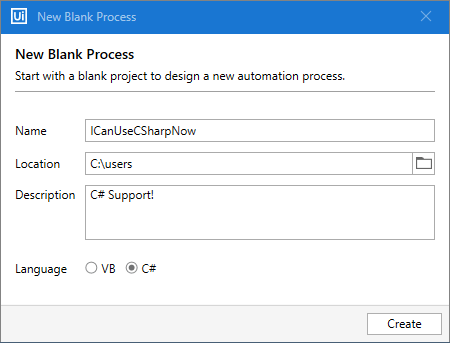
UiPath Studio also broadens its language support to cover a completely new community—C# developers. This feature, previously in experimental status over the past few releases, is now available and allows even more developers to experience automation development.
Speeding up projects has also been a constant theme over the past few releases, and this month we delivered a new Template feature in this area. Now, you can not only build custom templates but also choose to publish them to UiPath Orchestrator and have your team members benefit from them. Starting off with a template instead of a blank file speeds development time, and provides consistency among team members (especially important when dealing with distributed teams).
Finally, Studio now integrates with the new Data Service, reducing the number of variables and arguments needed in a project and providing more structure to the data used throughout automations. The Data Service establishes a common “contract” between two or more automations by defining the structure of data that will be shared between them. This reduces the complexity of passing data in and around workflows for activities that deal with forms, documents, taxonomies, and so on.
UiPath Test Suite meets SAP
For our professional developers and quality engineers – UiPath Test Suite announced its certification for integration with SAP Solution Manager. This integration enables customers to leverage their existing investments in SAP software by serving as a hub between SAP Solution Manager, UiPath Test Manager for test management activities, and UiPath Studio Pro for Robotic Process Automation (RPA) and application test automation.
The integration delivers automated test cases across the whole enterprise landscape including SAP and third party applications, while providing businesses that use SAP solutions with the ability to execute test cases, exchange complex test data, and ensure the functionality of business process change analyzer (BPCA) for automation projects.
In addition, all SAP test results will be available in UiPath Test Manager, so testing teams have one place to analyze test results for all applications, inclusive of SAP tests. This integration is available in the UiPath Test Suite Insider Preview Program.
UiPath StudioX broadens application support
For our citizen developers, this month’s release includes several highly requested features. Ever since we launched the Private Preview program for UiPath StudioX, we have heard about the need to have multiple email clients supported. Starting with 20.8, you can use both Gmail and Microsoft Exchange 365 to build your automations. Once the initial login is performed, the same email activities are available for both clients.
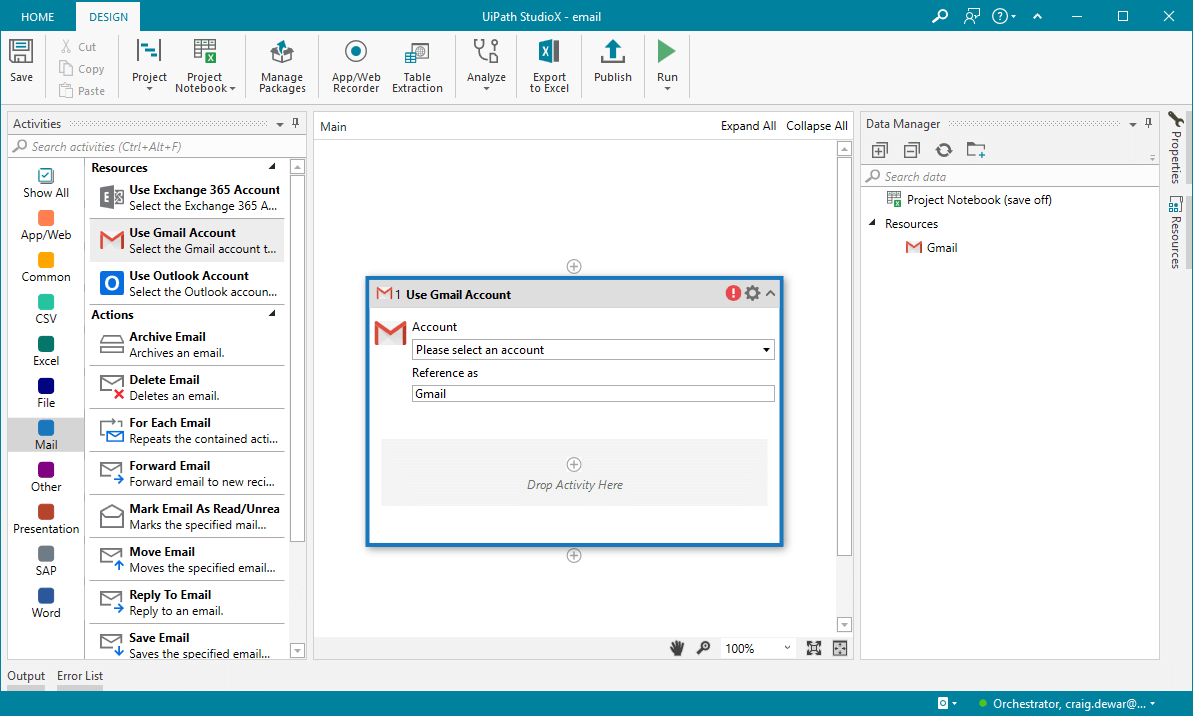
Another long-awaited capability is support for Microsoft PowerPoint presentations, now launching in UiPath StudioX. You can build presentations, replace items in the slides with new images, or add new text according to rules you have set.
We did not forget our existing core capabilities. There are several improvements to our Microsoft Excel activities as well. Starting with 20.8, you have the option to use the brand new “For each sheet” activity and the ability to read and work with a cell formula (or just the value).
We also heard repeated requests for performing small calculations or text modifications outside of the Project notebook. We are delivering new activities that modify text (from lowercase to uppercase, for example), make small numerical calculations (increments, multiplications, and so on) as well as saving these items for later use in the automation, all without leaving the StudioX canvas.
In order to organize the canvas better, you now have the option to Group or Ungroup activities and make for a cleaner workspace.
A new experience for UiPath Orchestrator
For our UiPath Orchestrator users in IT and centers of excellence (CoEs), this month our UiPath Automation Cloud customers get the first opportunity to try out the new user interface (UI) coming to Orchestrator, which focuses on improving the menu. We’re excited about this change and think you’ll find it much easier to get around Orchestrator with it. But we know change can feel disruptive if it comes at the wrong moment, so we’re starting with an “opt-in” for our existing UiPath Automation Cloud for community customers. Then, per our usual cloud rollout process, we’ll offer the opt-in to our enterprise customers about a week after that, with a plan to make it the default around the time we release it in 20.10 on-premises Orchestrator.
The changes introduce clearer tenant vs. folder navigation in a sleek new menu structure, a more contextual folder selector, and contextual submenus.

You can read more about the details of the new UI in our Forum post here.
Meet your new and improved UiPath Assistant
We believe that every person should be freed from manual tasks that steal time from important work. That’s why we introduced UiPath Assistant in the 20.4 release to help you make ‘a robot for every person’ a reality and deliver the benefits automation to everyone. This month, we’re excited to introduce an enhanced UiPath Assistant experience.
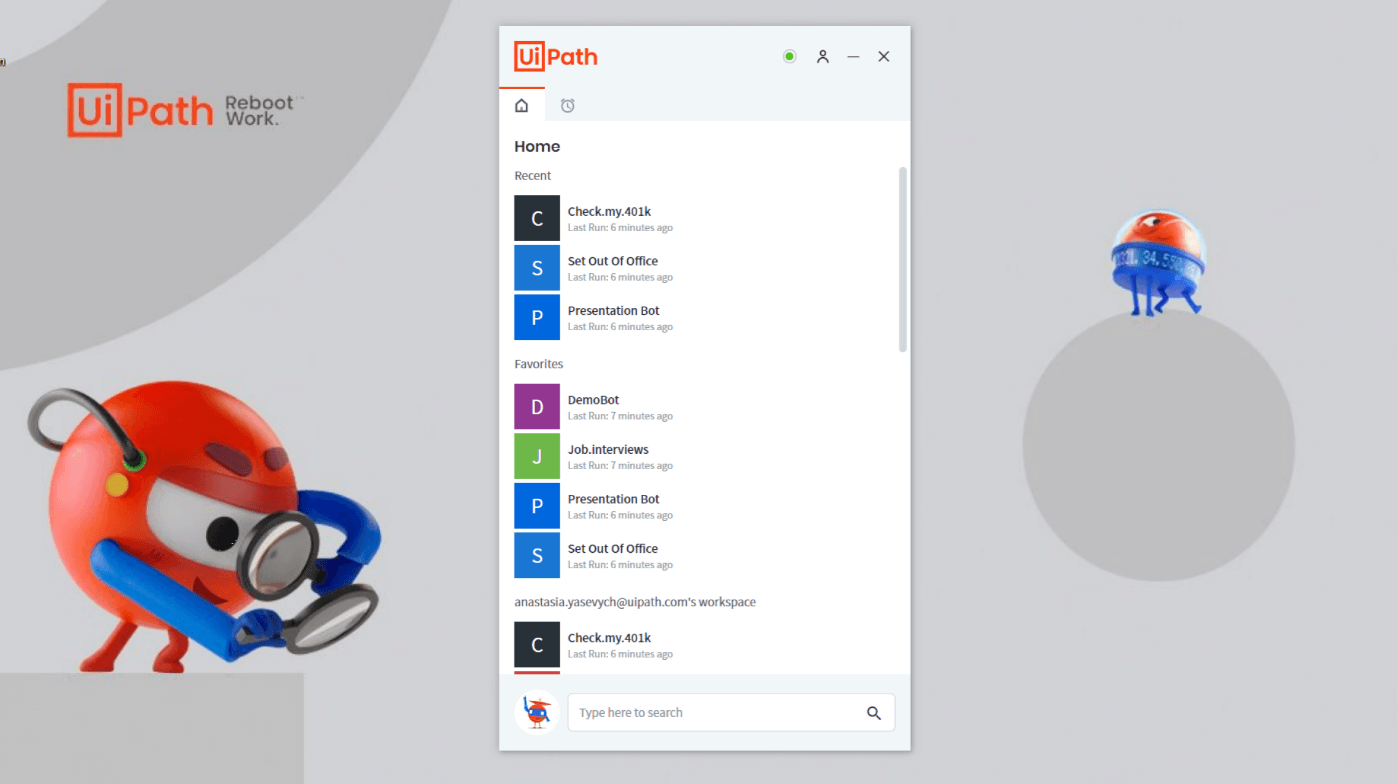
The new experience includes the following:
- A new console view and improved search mechanism – UiPath Assistant is now optimized for over 50 automations making it easier for users to find, prioritize, and collaborate with robots on daily tasks.
- Seamless login and first run experience – it’s now possible to connect your UiPath Robot to Orchestrator by simply signing in with your account, providing access to all available automations instantly.
- Notification support – UiPath Assistant can now send messages using the Windows notification system to provide visibility into process and connections status.
- Process configuration – the tool makes it possible for end users to customize the input arguments (for example, a folder with the new invoices) for every automation right in Assistant.
A makeover for UiPath Action Center
The UiPath Action Center is another primary experience for automation end users. Last month, we released the integration between Action Center and UiPath Process Mining. The integration further bridges the divide between understanding processes and acting on that knowledge. This time, we are excited to announce the public preview of a totally new makeover of Action Center that is optimized for business users.
As a business user, you no longer access UiPath Orchestrator to work on actions assigned to you. The experience is now presented in the cloud portal home page with a fresh and modern design tailored to the task at hand.
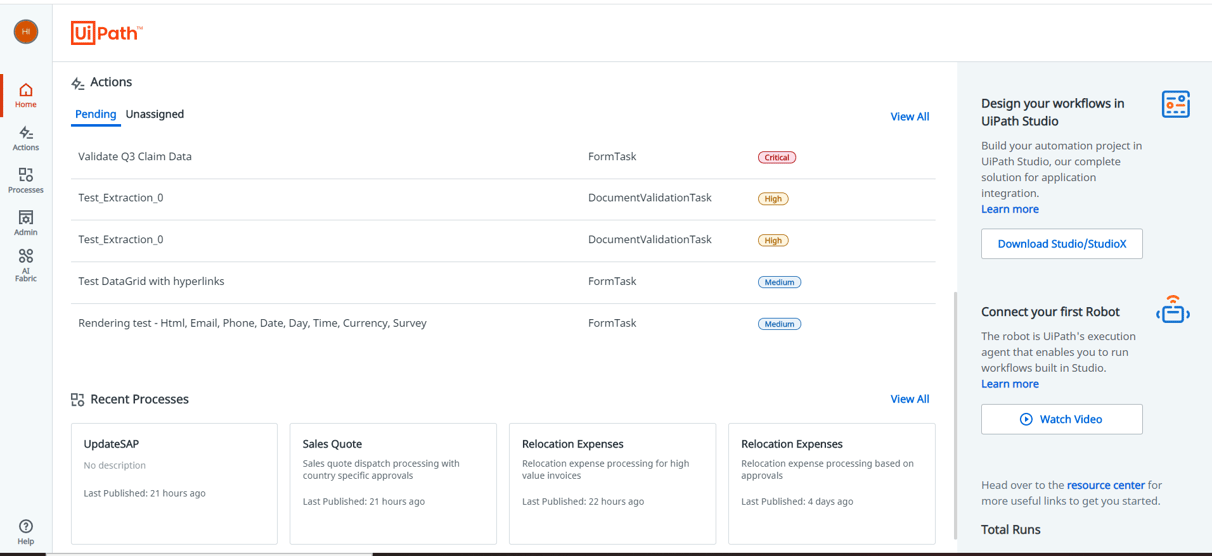
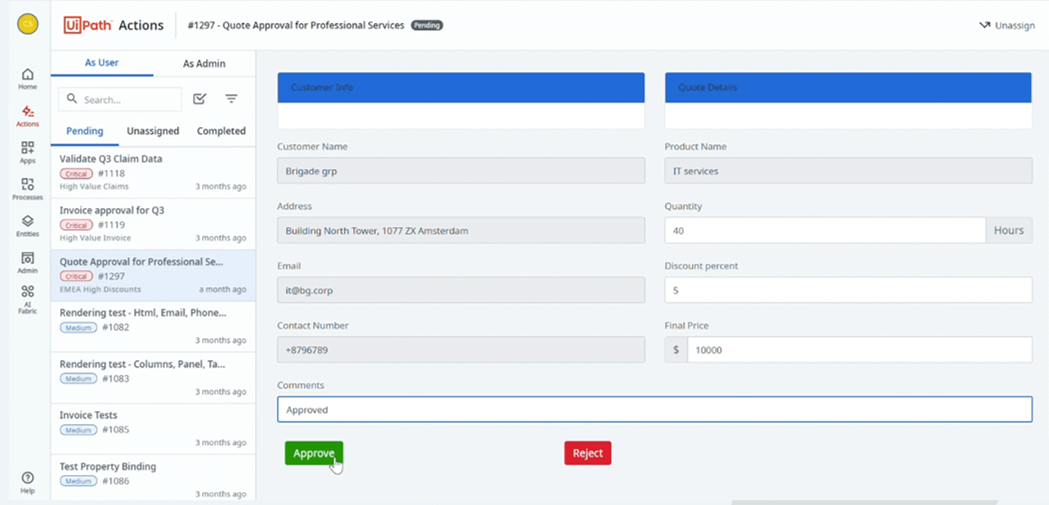
UiPath Document Understanding models become smarter
As for UiPath Document Understanding, the major and most expected update is machine learning (ML) model retraining based on data from human validation. In many cases, the results of data extraction or document classification need to be confirmed by an employee. Owing to this functionality, it’s possible to achieve almost 100% accuracy in document processing.
What’s impressive is that ML models can now learn from the data received from human validation to help robots process documents more accurately. If you set up the Train Extractors Scope and Train Classifiers Scope (available in preview within the Intelligent OCR Activity Package), validated data will be mapped exactly in the format required for the model retraining in Data Manager.
To ensure that the right data goes to the right trainer, especially when you combine several ML models for extraction, you need to set up a Framework Alias key for the corresponding models and trainers. Then, a training pipeline in UiPath AI Fabric should be created as this is where the ML models are hosted. As a result, the robot will be able to process documents with higher confidence scores, thus, it will require less human intervention over time. Read more about model retraining.
Another great update is related to OCR engines used to Digitize Document within the Intelligent OCR Activity Package. And adding to the list of already available optical character recognition (OCR) engines, you can now apply your own (or a third-party) OCR engine to perfectly suit your custom use case.
Continued investment in native integrations with technologies you use today
This month, we announced our new strategic partnership with Alteryx, a leader in analytic process automation (APA). The UiPath Activity for Alteryx is a set of pre-packaged activities that allows users to trigger Alteryx workflows directly from UiPath Studio. The UiPath Platform extends the value of APA by automating high-value tasks, bringing in new and complex data sources for processing within Alteryx, and using robots to automate manual output tasks to other systems.
We also launched a new integration with DocuSign. The UiPath Activity for DocuSign gives robots the power to prepare signature documents, manage envelopes and recipients, and send documents out for signature.
We also continue to build integrations with core technologies in the contact center space. Interactive voice response (IVR) systems are a first point of contact for customers, but they often fall short of fulfilling customer requests because they can only connect to systems accessible via APIs.
This month, we launched a new integration with Genesys PureCloud. We also recently announced an integration with Amazon Connect. By enabling customers to trigger automation directly from these IVR platforms, customer requests are resolved quickly, freeing up agents to work on more complex customer issues.
I hope you are as excited about these new capabilities as the team is. As always, we invite you to sign up for the UiPath Insider Preview Program to try these new features and share your feedback.
See you at DevCon.





